Abstract
The relationship between the serological findings for brucellosis and the epidemiological factors has been studied in veterinary surgeons in Northern Ireland. The anti-human globulin (Coombs) test and the complement-fixation test for brucella were used in two groups of veterinary surgeons, those self-employed and those employed by the Ministry of Agriculture.
Significant serological differences were found to exist between the two groups. Those in private practice showed changes related to age, cattle skin rash, reactions to S. 19 vaccine accidents and symptoms suggestive of brucellosis in the past or the last year. But those working for the Ministry only showed titre changes related to the length of their private practice experience before joining the Ministry. In neither group was there a relationship between serological findings and the type of milk drunk or any particular group of symptoms suggestive of brucellosis.
The findings indicate that high titres to brucella by the Coombs and complement-fixation test can occur in people repeatedly exposed to infection at work. Titres which would be of diagnostic importance in the rest of the population may be of little diagnostic significance even when they are as high as 160 Coombs and 128 complement fixation.
Full text
PDF
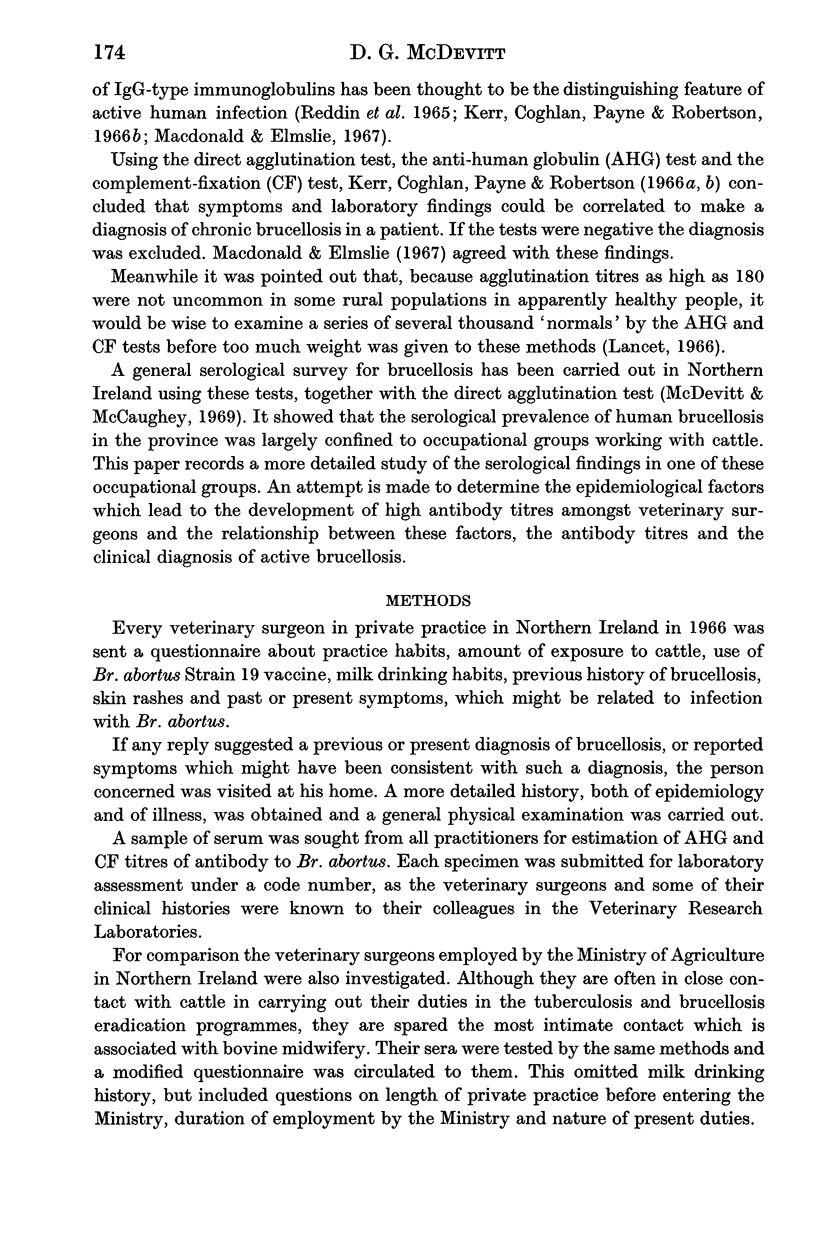
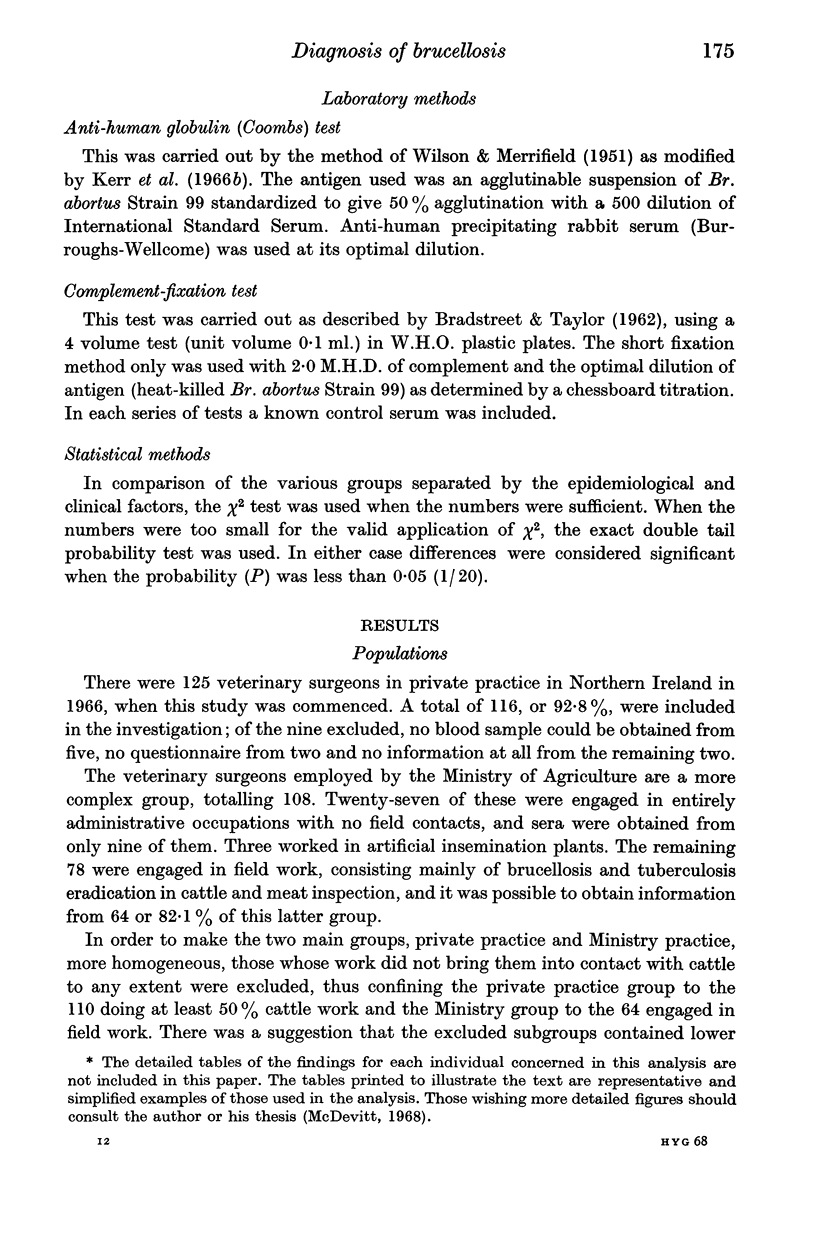

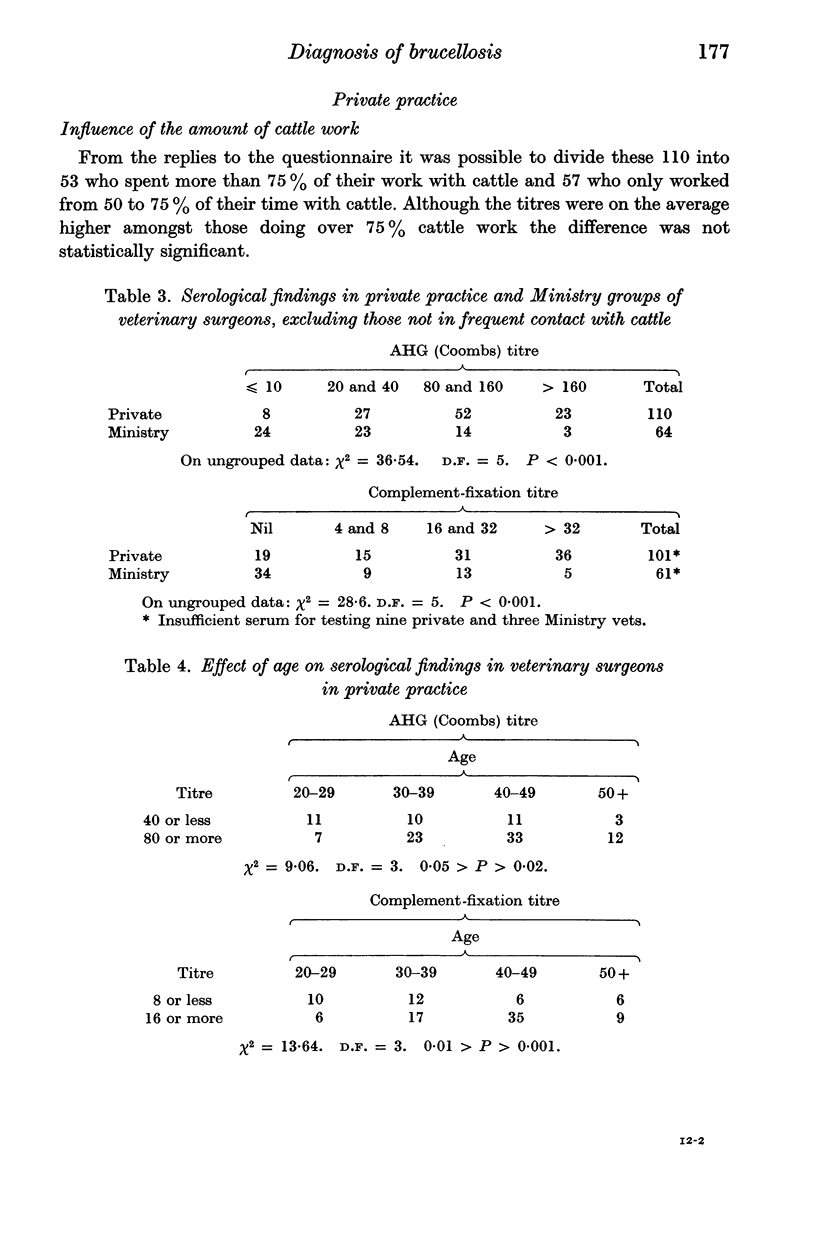
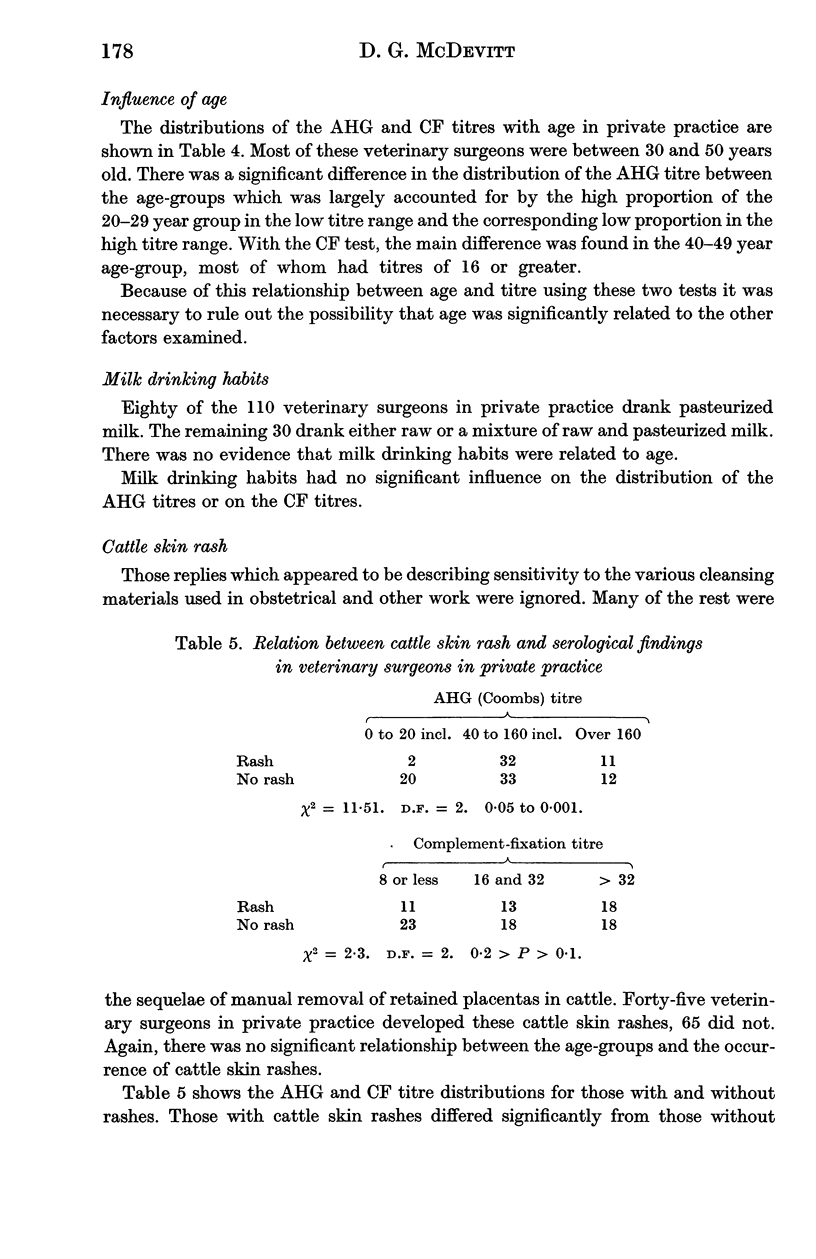
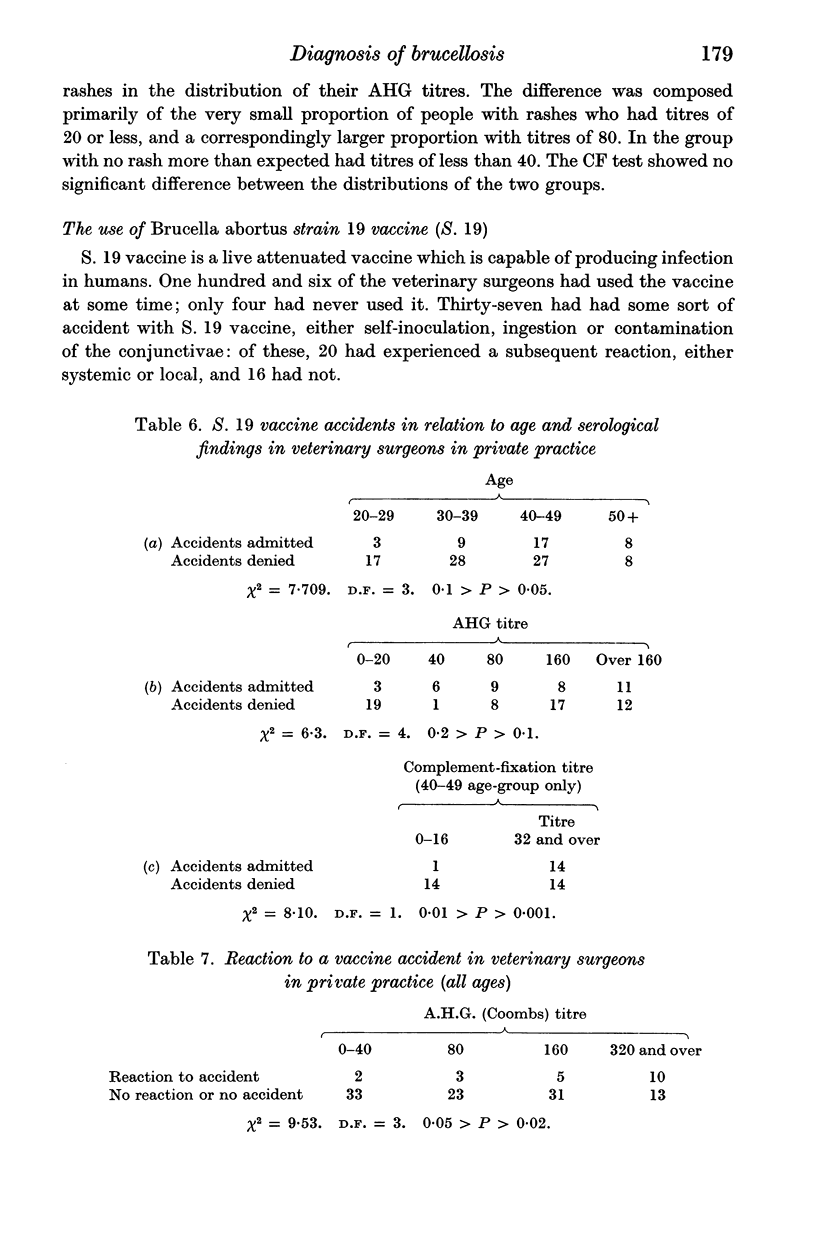

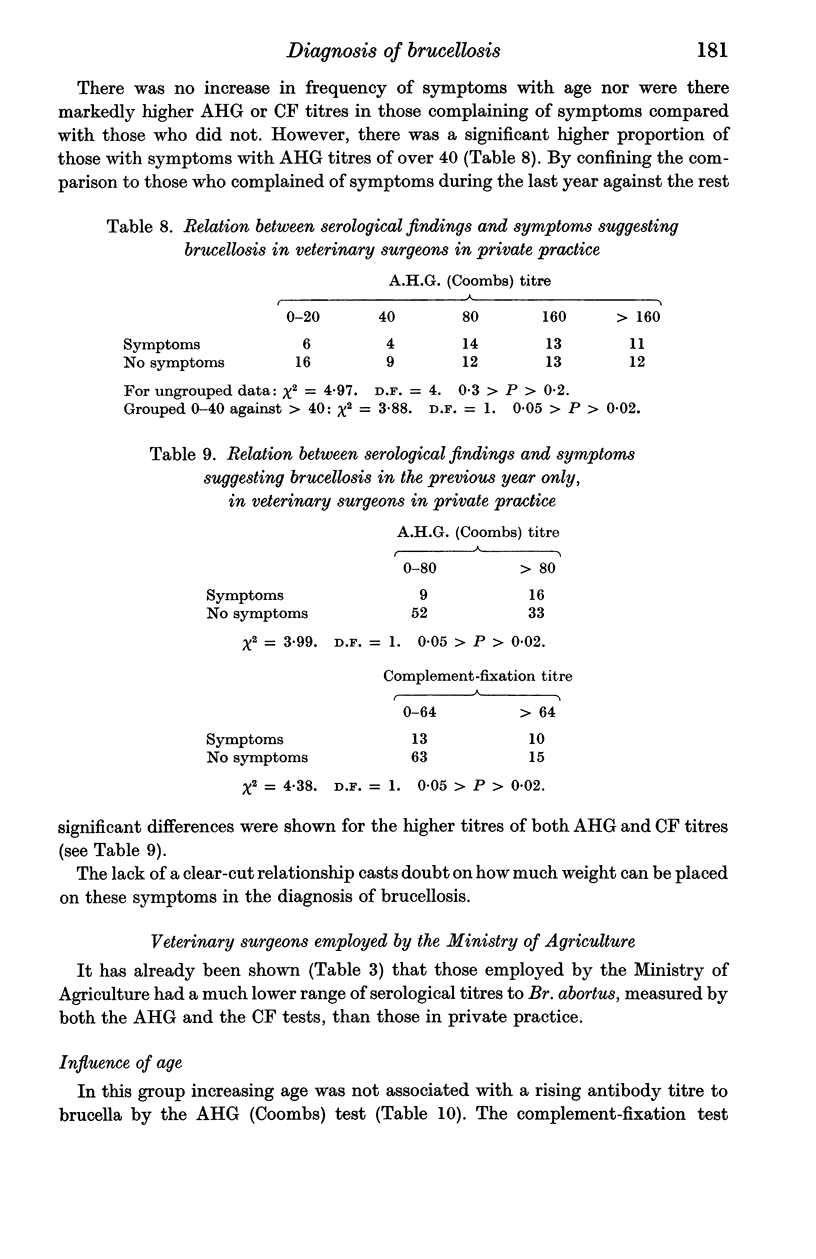
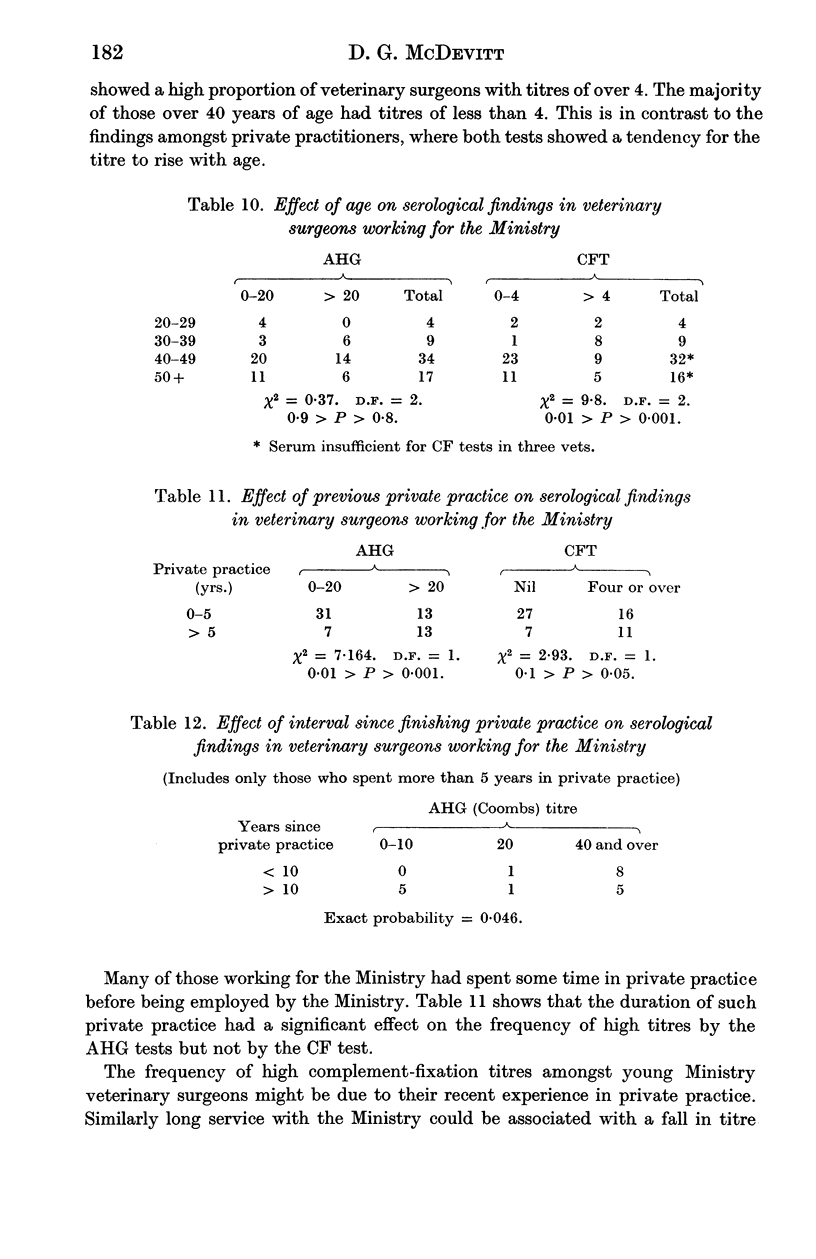

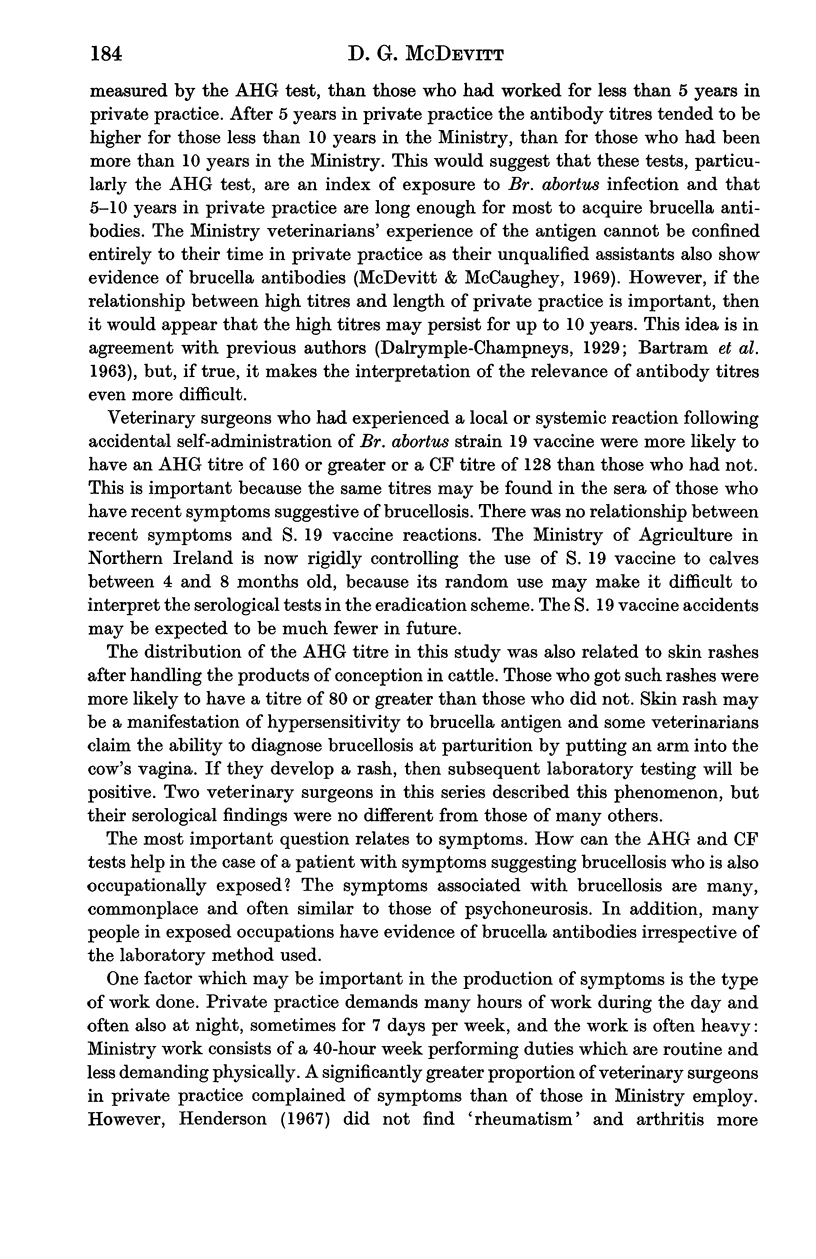
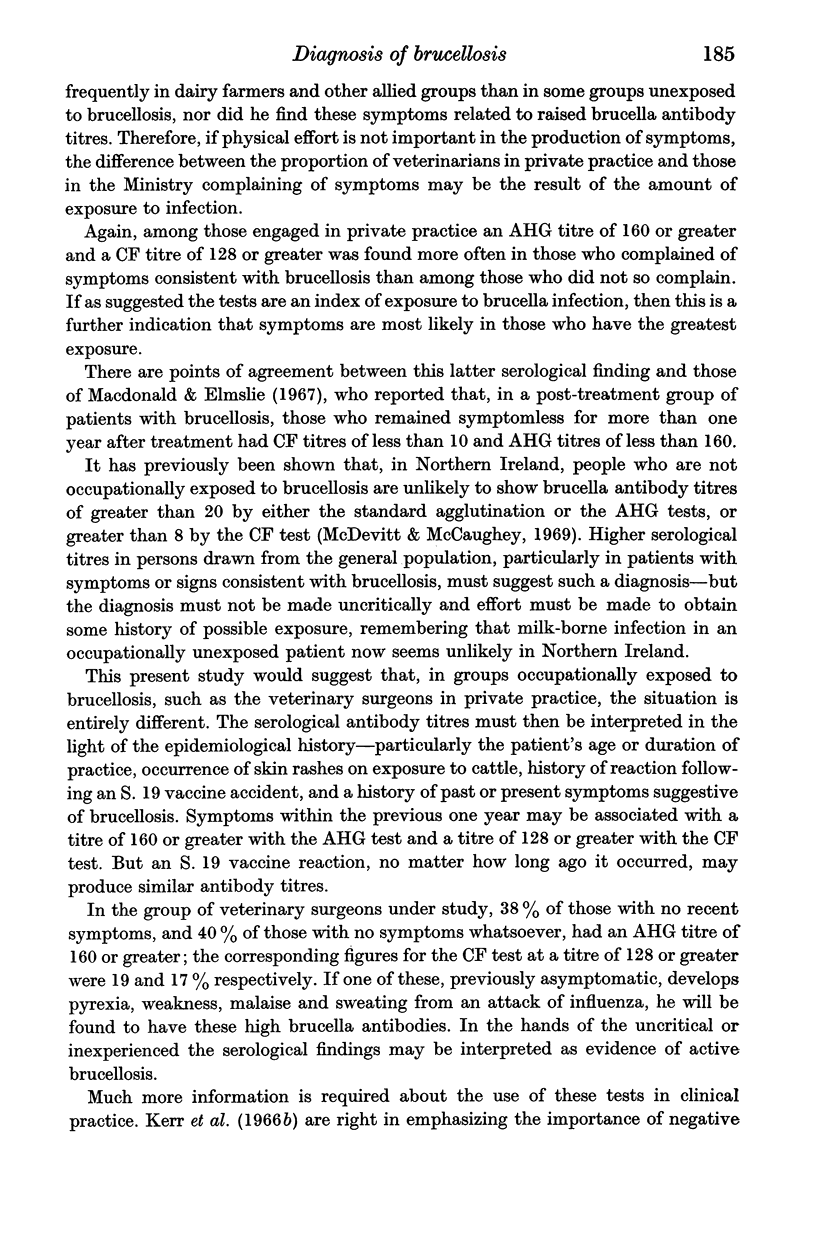
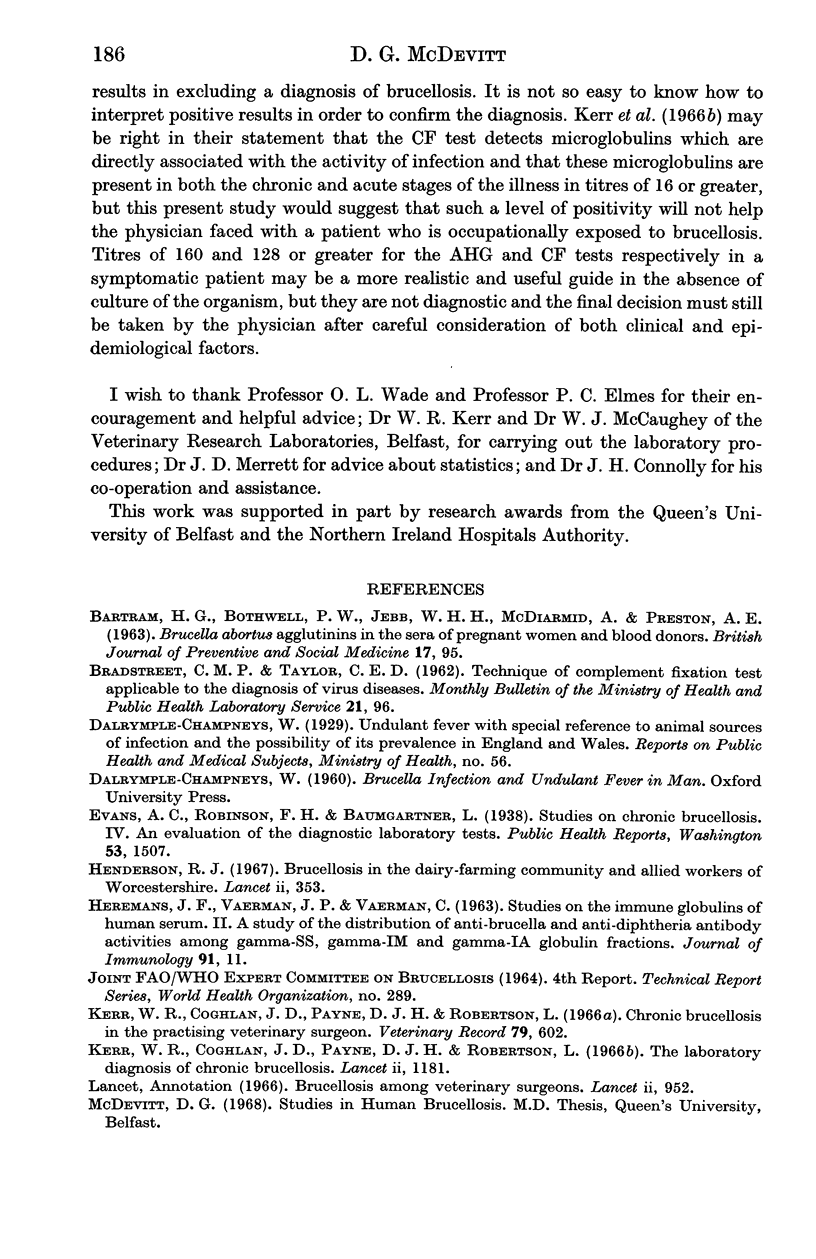
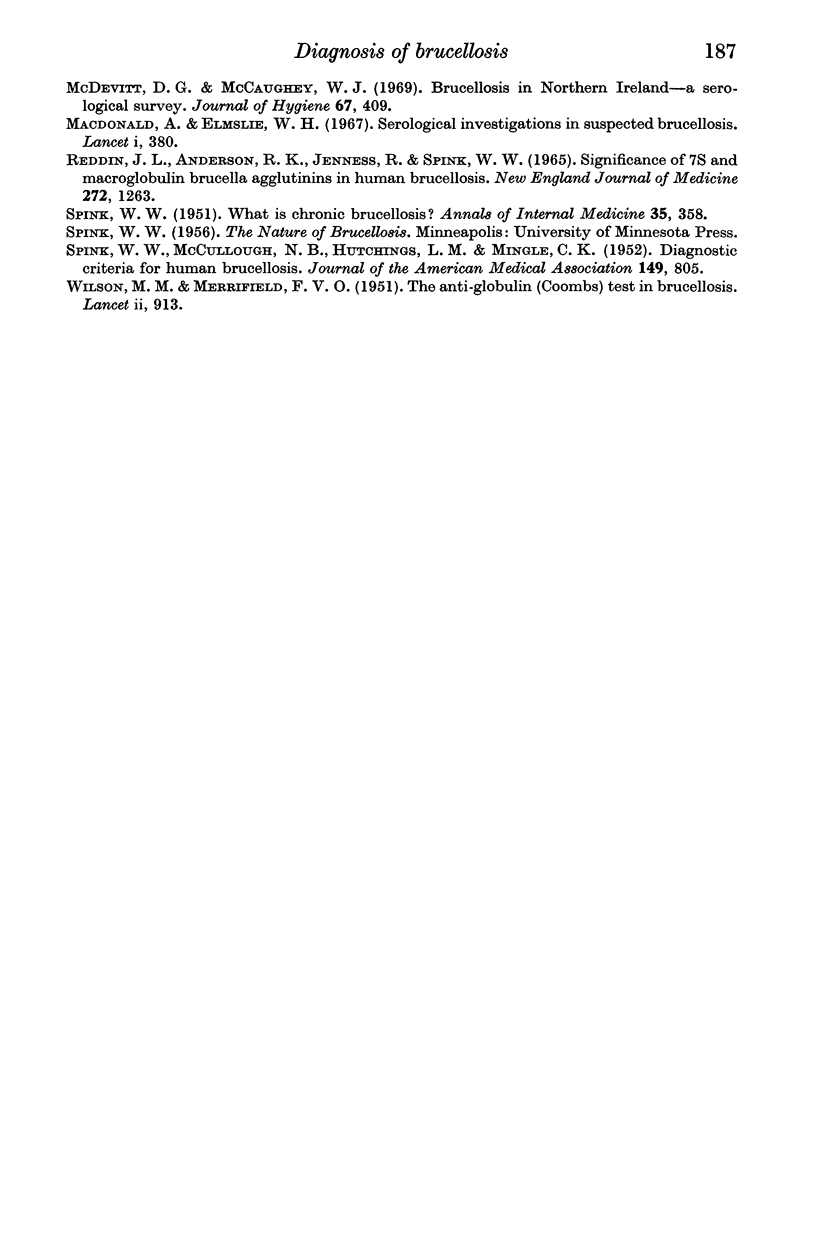
Selected References
These references are in PubMed. This may not be the complete list of references from this article.
- BARTRAM H. G., BOTHWELL P. W., JEBB W. H., McDIARMID A., PRESTON A. E. Brucella abortus agglutinins in the sera of pregnant women and blood donors. Br J Prev Soc Med. 1963 Apr;17:95–100. doi: 10.1136/jech.17.2.95. [DOI] [PMC free article] [PubMed] [Google Scholar]
- BRADSTREET C. M., TAYLOR C. E. Technique of complementfixation test applicable to the diagnosis of virus diseases. Mon Bull Minist Health Public Health Lab Serv. 1962 May;21:96–104. [PubMed] [Google Scholar]
- HEREMANS J. F., VAERMAN J. P., VAERMAN C. STUDIES ON THE IMMUNE GLOBULINS OF HUMAN SERUM. II. A STUDY OF THE DISTRIBUTION OF ANTI-BRUCELLA AND ANTI-DIPHTHERIA ANTIBODY ACTIVITIES AMONG GAMMA-SS, GAMMA-IM AND GAMMA-1A-GLOBULIN FRACTIONS. J Immunol. 1963 Jul;91:11–17. [PubMed] [Google Scholar]
- Henderson R. J. Brucellosis in the dairy-farming community and allied workers of Worcestershire. Lancet. 1967 Aug 12;2(7511):353–357. doi: 10.1016/s0140-6736(67)90192-4. [DOI] [PubMed] [Google Scholar]
- Kerr W. R., Coghlan J. D., Payne D. J., Robertson L. The laboratory diagnosis of chronic brucellosis. Lancet. 1966 Nov 26;2(7474):1181–1183. doi: 10.1016/s0140-6736(66)90492-2. [DOI] [PubMed] [Google Scholar]
- McDevitt D. G., McCaughey W. J. Brucellosis in Northern Ireland. A serological survey. J Hyg (Lond) 1969 Sep;67(3):409–416. doi: 10.1017/s0022172400041826. [DOI] [PMC free article] [PubMed] [Google Scholar]
- REDDIN J. L., ANDERSON R. K., JENNESS R., SPINK W. W. SIGNIFICANCE OF 7S AND MACROGLOBULIN BRUCELLA AGGLUTININS IN HUMAN BRUCELLOSIS. N Engl J Med. 1965 Jun 17;272:1263–1268. doi: 10.1056/NEJM196506172722403. [DOI] [PubMed] [Google Scholar]
- SPINK W. W., McCULLOUGH N. B., HUTCHINGS L. M., MINGLE C. K. Diagnostic criteria for human brucellosis; report No. 2 of the National Research Council, Committee on Public Health Aspects of Brucellosis. J Am Med Assoc. 1952 Jun 28;149(9):805–808. doi: 10.1001/jama.1952.02930260007003. [DOI] [PubMed] [Google Scholar]
- SPINK W. W. What is chronic brucellosis? Ann Intern Med. 1951 Aug;35(2):358–374. doi: 10.7326/0003-4819-35-2-358. [DOI] [PubMed] [Google Scholar]
- WILSON M. M., MERRIFIED E. V. O. The antiglobulin (Coombs) test in brucellosis. Lancet. 1951 Nov 17;2(6690):913–914. doi: 10.1016/s0140-6736(51)91875-2. [DOI] [PubMed] [Google Scholar]


